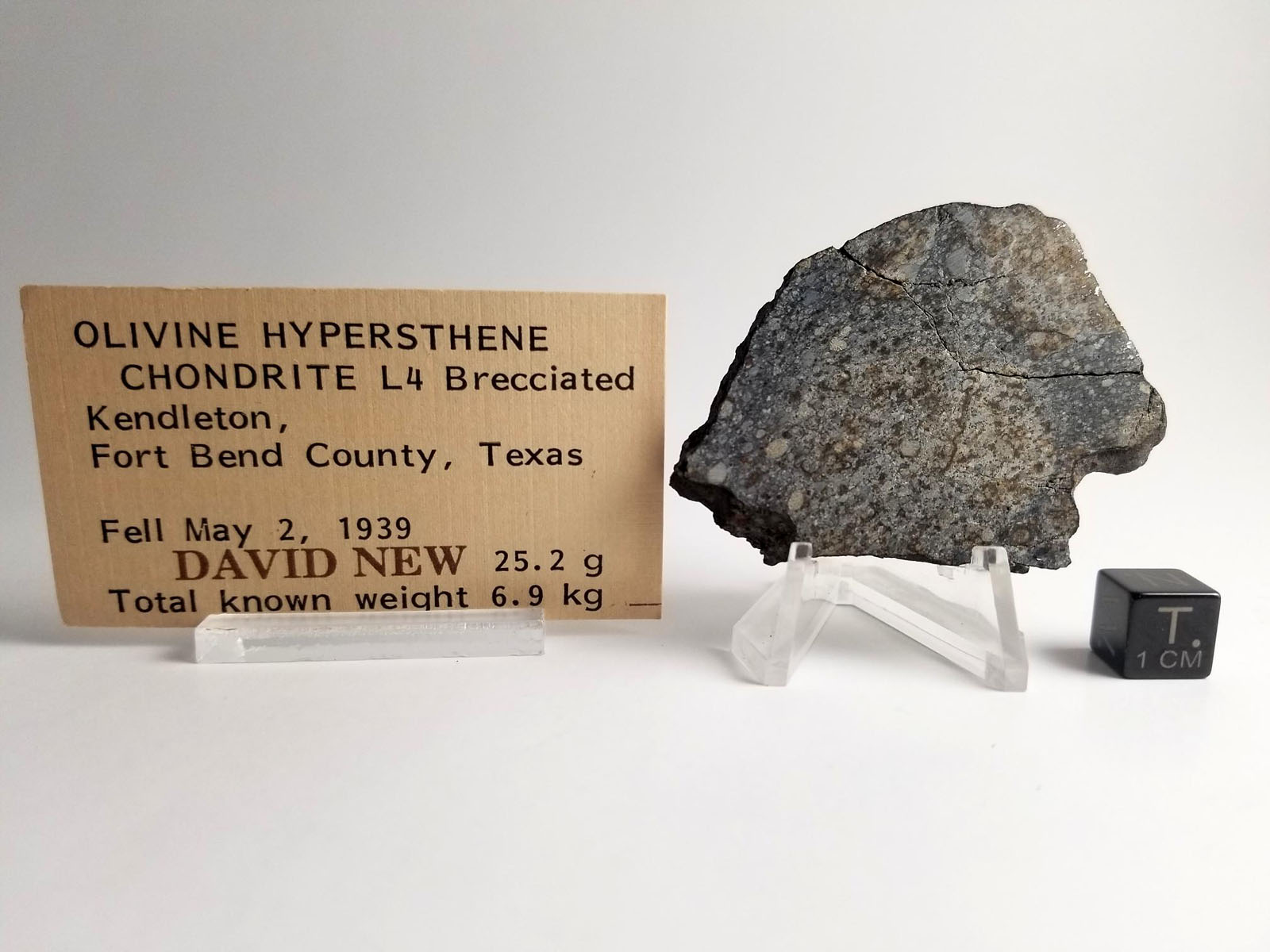|
Roll Overs:
1
2
3
4
5
|

|
25.2 gram full slice. L4
TKW 6.94 kg. Observed fall May 2, 1939, in Fort Bend County, Texas, USA.
  
Roberto writes:
This is a meteorite I have been wanting for some time, but had been waiting to see if I could acquire
at a really good price. However, Iíve come to realize that pieces of this meteorite are getting harder and harder to come by, so I finally decided to jump on this 25.2g full slice with David New provenance. The last thing Iíd want is to let it get away and then spend years regretting it.
Kendleton is a witnessed fall that occurred in Fort Bend County, Texas on May 2nd, 1939. Itís especially
cool because a photograph was taken of the smoke trail left by the meteoriteís flight through the air. As far as I can tell, this was only the second time the phenomenon had been caught on camera. The first time being the Pasamonte fall, 6 years earlier, in 1933. Photo 5 is the Kendleton smoke trail taken from Frank Cressyís book
"From Weston to Creston" (2016).
Kendleton was one of the falls that Oscar E Monnig chased in his heyday. Some of the pieces he purchased
are still in the Monnig collection. Kendleton was eventually classified as an L4 and while the metbul total known weight is listed as being 6.94 kilograms, Monnig later obtained an addition 3 kilograms. These additional finds brought the total known weight 9.7 kilograms.
While L4s arenít exactly rare or exotic, Kendleton has a lot going on, compositionally! Studies of
this meteorite have found that it also includes type L5/6 clasts, glassy clasts, unequilibrated type 3 clasts, and even a rare tridymite-rich inclusion. This inclusion is believed to have originated in an H-chondrite parent body based on O-isotope studies, but the likes of which havenít been found in other H chondrites. As such, Kendleton is more of a (non-lunar) fragmental regolith breccia than your run-of-the-mill L4.
Links:
Meteorites Australia
Falling Rocks
|
Click to view larger photos
#1
#2
#3
#4
#5
|
Found at the arrow (green or red) on the map below
|
|
| |
Paul Swartz
11/6/2021 6:35:49 PM |
The Idiot Programmer strikes again! Sorry about that. |
John Divelbiss
11/6/2021 2:43:03 PM |
METBull coordinates look correct 29.6 N, 96 W +/- near Houston...oops |
Anne Black
11/6/2021 2:21:37 PM |
There is a strange problem here. Kendleton fell in Texas, not very far from Houston, but the map from the Met. Bulletin shows the coast of North Carolina and an impact site near Greenville. Odd! |
| |
|